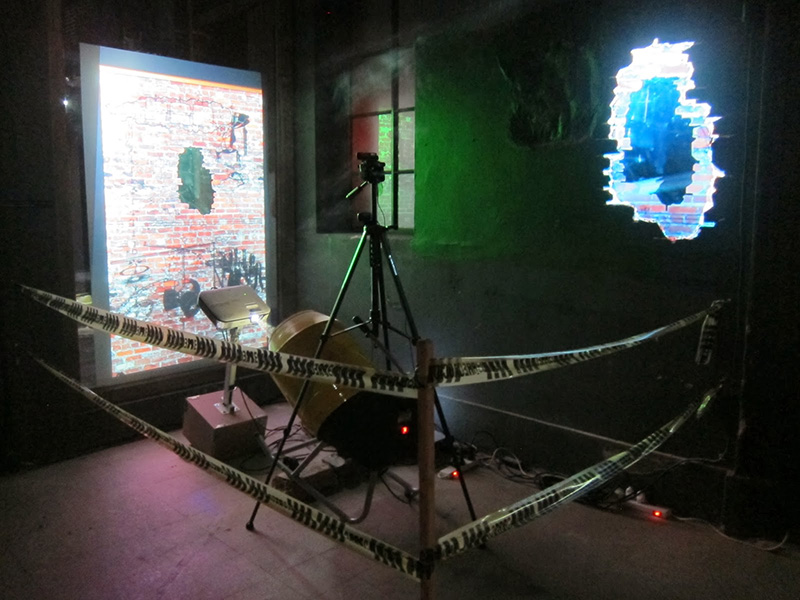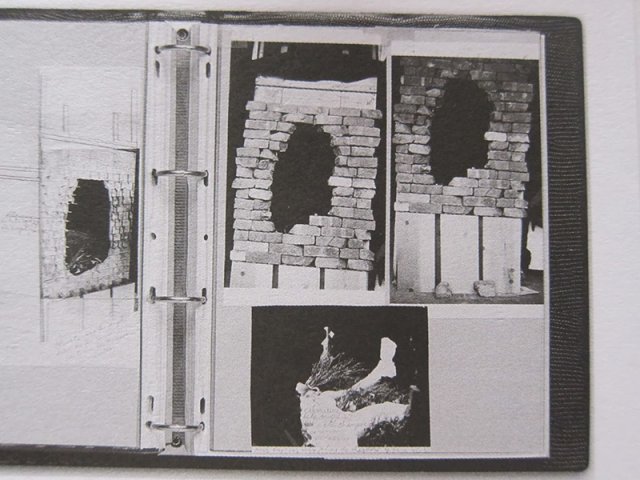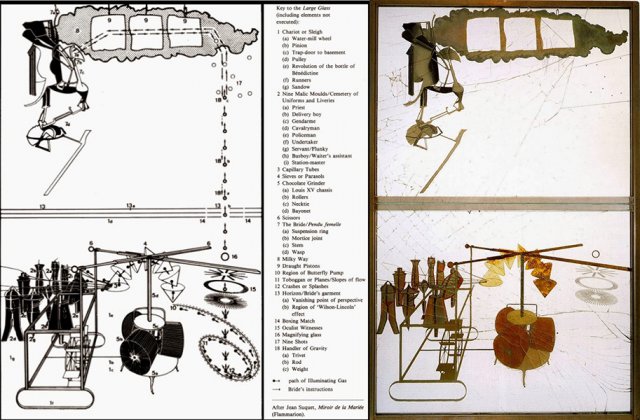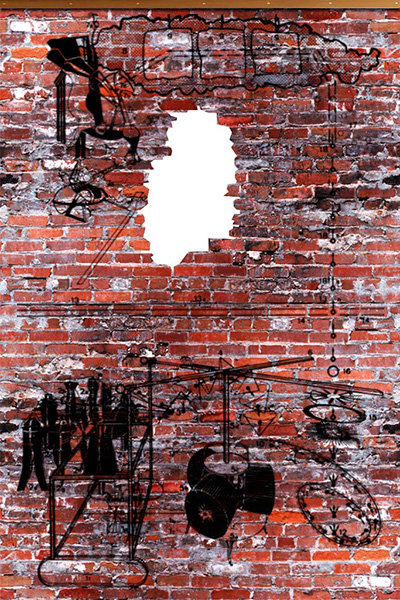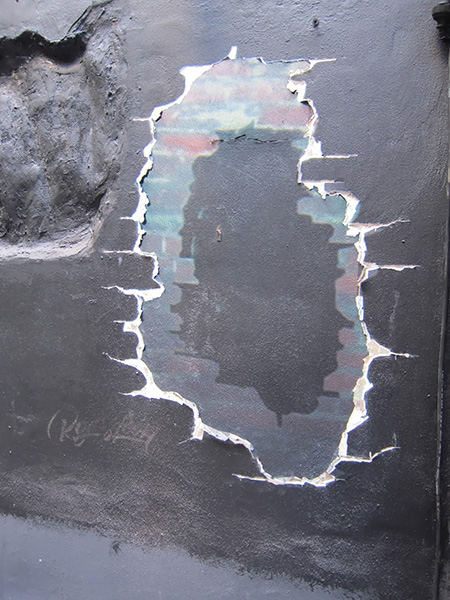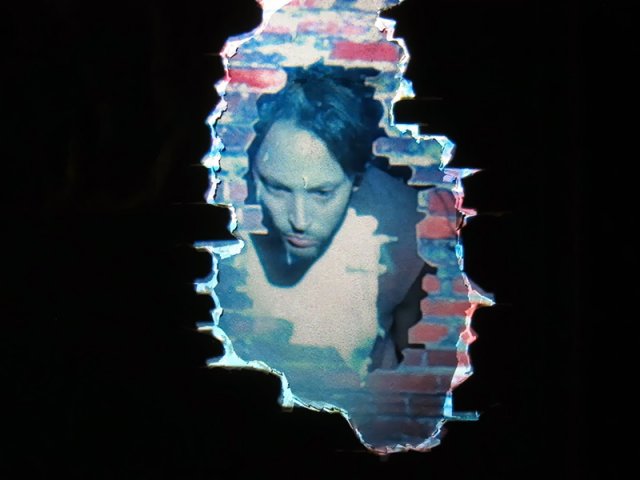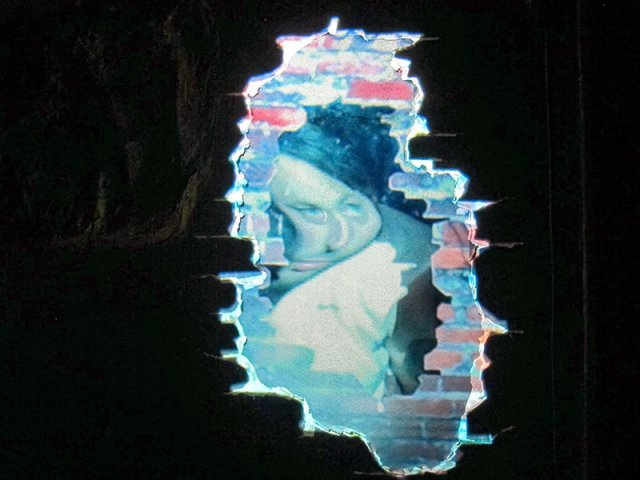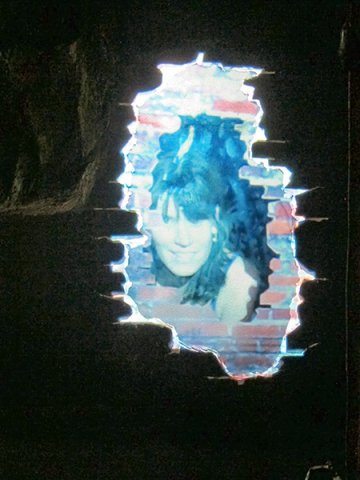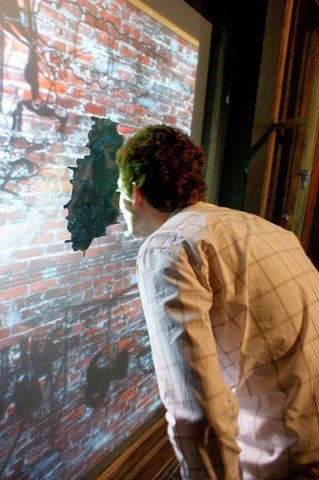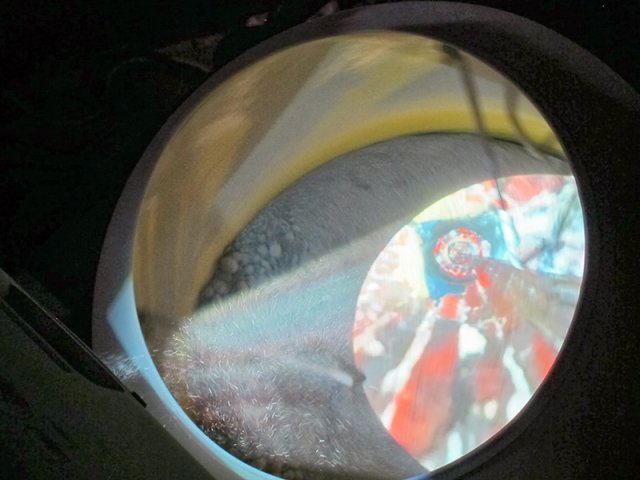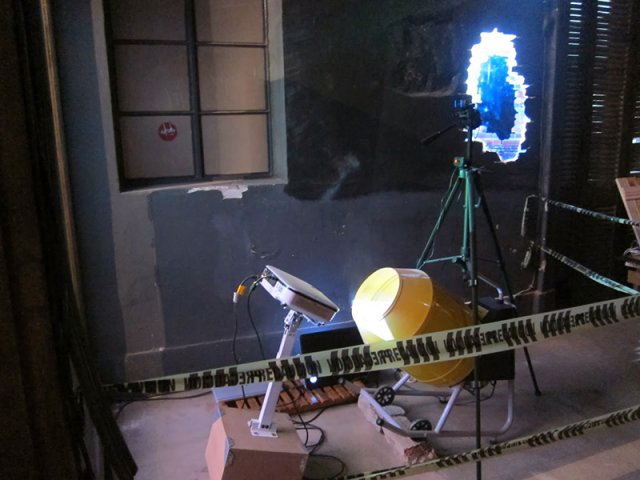Tautological Deconstruction: Between the Large Glass and the Etant Donnes
2013
Digital Art * Electronic Art * Interactive Art * Interactive Installation * Videomapping
Glass window, concrete mixer, vinyl, delimiting tape, earth, sand and lime.
Software: Processing
Hardware: PCs, two webcams, three projectors.
Introduction
A technology is interactive if it reflects the consequences of our actions or decisions on us. It follows from this that an interactive technology is a medium through which we communicate with ourselves… a mirror. -David Rockby
The construction of the historical narrative, and of identity, is usually seen as a process that emerges based on data considered objective, facts, where the continuous past is divided into specific relevant events. Deconstruction is the very revision of these concepts based on historical processes and metaphorical overlays.
In The Bride Laid Naked by Her Bachelors, Duchamp even glimpses a complex mechanism where each part has its own name and each action has its reaction. From the division of the Duchampian Large Glass, I propose an analogy between systemism and mechanism, where the Etant Donnes emerges as a figurative materialization of the Large Glass, converging the elements on which Duchamp theorized.
Etant Donnes is completed only thanks to the presence of the spectator, who is situated in the dark room between the door and the wall, conducive to masturbation and evidencing the impossibility of physically reaching the naked woman. We can only wish and admire her nudity, it is like the long-awaited search for identity in time.
General description
The interactive installation is specially designed for the exhibition space La Sin Futuro, in that sense it is a site specific work articulated with the aesthetic and conceptual problems that I have been developing.
The interactor can peer through the hole projected onto the glass to see its distorted, blended reflection inside a model concrete mixer on the other side of that glass. Another projection on one of the walls of the space shows the image of that interactor temporarily distorted. In turn, the wall that receives this projection has the shape of the hole projected on the glass (which is an appropriate form of Duchamp’s work).
Process
I developed the aesthetic and conceptual proposal taking advantage of the glass within the space destined for my production. I glued a frosted vinyl to the glass, which was later pierced with the same brick structure as the wall of Duchamp’s Etant Donnés.
Projection on glass
An image that I digitally designed of a brick wall with the same fretwork hole is projected onto the glass. This wall has an aesthetic treatment in relation to the Large Glass by Duchamp.
Projection on the wall
Sobre la pared lateral hice una especie de hueco grabado, jugando con los valores del revoque de la On the side wall I made a kind of engraved hole, playing with the values of the wall plaster. Leave the white plaster as a light frame and inside the dark color of the paint to project and achieve the desired effect. The frame of light drawn, generated by the white plaster, continues the shape of the real and projected bricks.
Above the concrete mixer, a tripod supports two high-definition webcams, one webcam is used for projection on the wall and the other for projection inside the concrete mixer. Use Processing as a programming language to manipulate the projected images in real time.
The deformation of the portrait in this case occurs with a vertical scan that rearranges the pixels horizontally, producing a temporary deformation with a delay in relation to the image captured by one of the cameras.
Projection inside the concrete mixer
The projection inside the concrete mixer works as a mirror, unlike the image projected on the wall, which is difficult for the same interactor to see, since it is designed to be seen by the rest of the spectators.
The digital manipulation of the image inside the concrete mixer generates a transformation of the pixels in a concentric way, with the vanishing point varying, mixing the pixels with the same direction and speed of rotation of the concrete mixer. This effect gives the sensation of blending the mirror image itself.
The concrete mixer has earth, sand and lime inside, a self-referential symbology of several of my works.
